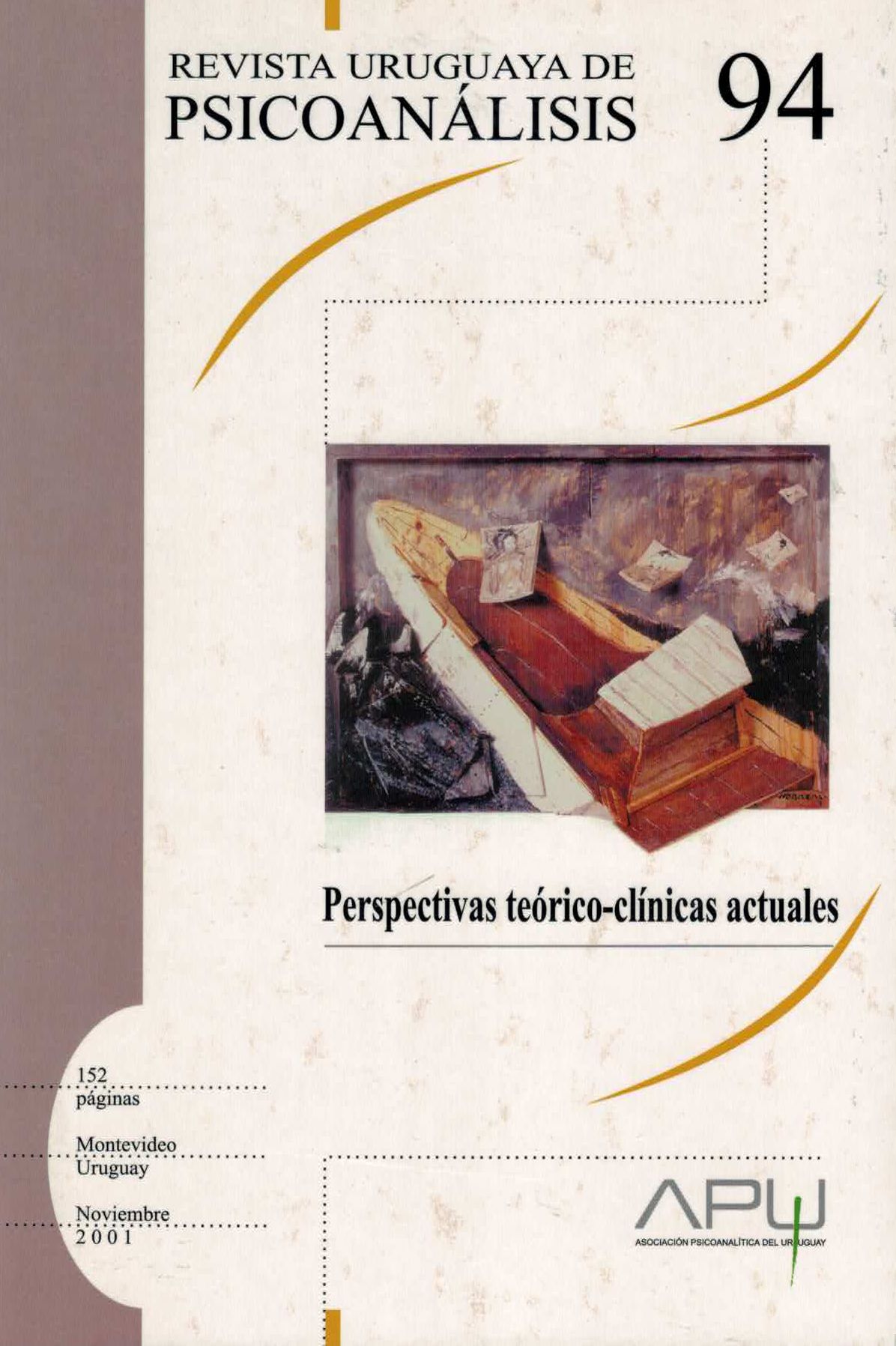A Minimalist Approach to Transference Interpretations.
Keywords:
transferencia, convergenciasAbstract
Trabajo presentado en el Panel “Objetivos contrastantes en la interpretación transferencial”. En el 42º Congreso de IPA, Niza 2001
En 1993, Kernberg incluyó el tema de la transferencia entre las convergencias de la técnica psicoanalítica, convergencias a las que se tiende a partir de métodos de interpretación dispares. El énfasis que Gill (1976, 1979, 1982) y Gill y Hoffman (1982) pusieron sobre la interpretación temprana de la transferencia contribuyó a aproximar la Psicología del Yo norteamericana al enfoque británico. Kernberg indica asimismo cómo hoy en día los analistas kleinianos prestan mayor atención “a un análisis más gradual del material asociativo y de las actitudes del paciente, el cual se realiza desde la superficie hacia la profundidad, omitiendo referencias directas al material genético en etapas tempranas de la interpretación transferencial” (p. 660). De este modo, consideraba que el enfoque británico se aproximaba al de la Psicología del Yo norteamericana. Sin embargo, Kernberg también afirma que: “No obstante, subsisten diferencias importantes en los enfoques interpretativos de la transferencia entre las diferentes escuelas” (págs. 660-661). (...)
Downloads
References
BOTT-SPILLIUS, E. (1994). On formulating clinical facts to the patient. Int. J. Psychoanal., 75: 1121-1132.
BUSCH, F. (1993). In the neighborhood. Aspects of a good interpretation and a developmental lag in ego psychology. J. Amer. Psychoanal. Assoc., 41: 151-177.
_______. (1995a). Do actions speak louder than words?: a query into an enigma in analytic theory and technique. J. Amer. Psychoanal. Assoc., 45: 61-82.
_______. (1995b). Begining a psychoanalytic treatment: establishing an analytic frame. J. Amer. Psychoanal. Assoc., 43: 449-468.
GILL, M.M. & MUSLIN, H.L. (1976). Early interpretation of the transference. J. Amer. Psychoanal. Assoc., 24: 779-794.
GILL, M.M. (1979). The analysis of the transference. J. Amer. Psychoanal. Assoc., Suppl: 263-288.
_______. (1982). Analysis of Transference. Vol. 1. New York: International Universities Press.
_______ & HOFFMAN, I.Z. (1982). Analysis of Transference. Vol. 2. New York: International Universities Press.
FREUD, S. (1913). On beginning the treatment (further recommendations in the technique of psychoanalysis, I). S.E. 12: 123-144.
_______. (1914). Remembering, repeating, and working through. S.E. 12: 145-156.
_______. (1926). Inhibitions symptoms and anxiety. S.E. 20: 77-178.
KERNBERG, O.F. (1993). Convergences and divergences in convergences in contemporary psychoanalytic technique. Int. J. Psychoanal., 74: 659-673.
PIAGET, J & INHELDER, B. (1959). The Psychology of the Child. New York: Basic Books.
SEARL, M.N. (1936). Some queries on principies of technique. Int. J. Psychoanal., 17:471- 493.



 This work is licensed under a
This work is licensed under a 